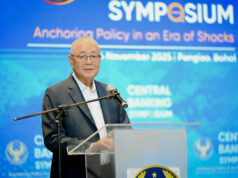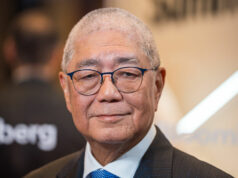Philippines, Japan ink new currency swap deal
By Melissa Luz T. Lopez, Senior Reporter
THE Bangko Sentral ng Pilipinas (BSP) has opened a new yen swap facility with the Bank of Japan (BoJ), which would allow local banks to tap their yen holdings to secure a fresh liquidity boost.
In a statement, the BSP said a third bilateral swap agreement has been forged with their Japanese counterpart that will allow local players to avail of a swap window between the two countries effective Oct. 6.
Under the latest deal, the Philippines can swap currencies worth up to $12 billion, while Japan can exchange as much as $500 million.
“The authorities of both countries believe that the strengthened bilateral financial cooperation will contribute to the stability of financial markets, promote the use of local currency including the Japanese Yen in Asia in the medium term, and thereby further develop growing economic and trade ties between the Philippines and Japan,” the BSP statement read.
In 2016, the Philippine central bank laid out fresh guidelines for the swap facility under Circular 919, which allows local players to use their yen-denominated assets as a standby fund during emergency situations.
The swap facility essentially lets them use their yen holdings to get hold of fresh money supply. Under the circular, banks in an “emergency situation” – defined as a time of “severe shortage” in peso liquidity or during moments of financial pressure brought about by “unforeseeable” events – may avail of the swaps.
A bank in need of cash may deposit their yen holdings in the BSP’s account with the BoJ. This service, however, is reserved for banks with good ratings and have not engaged in unsound banking practice, as evaluated by the central bank.
The BSP holds some assets expressed in the Japanese yen and are considered as part of the country’s international reserves.
The swaps have a maximum 30-day term. The BSP and BoJ had their first swap agreement in 2006, followed by another in August 2016.
The government of Japan stood as the biggest source of overseas development assistance (ODA) for the Philippines as of end-June, with $4.84 billion worth of loans accounting for 44.8% of the total, according to the National Economic and Development Authority.
The Philippine government will be relying on ODA to finance the P8-trillion infrastructure spending plan of the Duterte administration, alongside publicly-funded projects and public-private partnerships.
Projects to be funded by the Japan International Cooperation Agency include the Malolos-Clark line of the Philippine North Railways, the Cavite Industrial Area Flood Management Project, the Malitubog-Maridagao Irrigation Project Phase II, and the recently-approved Metro Manila Subway Project.



